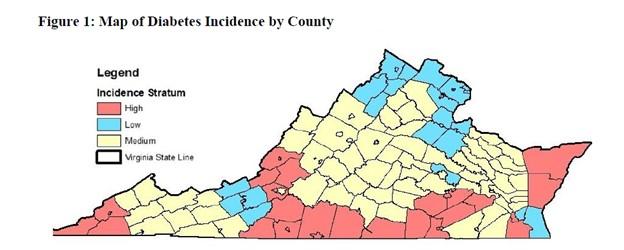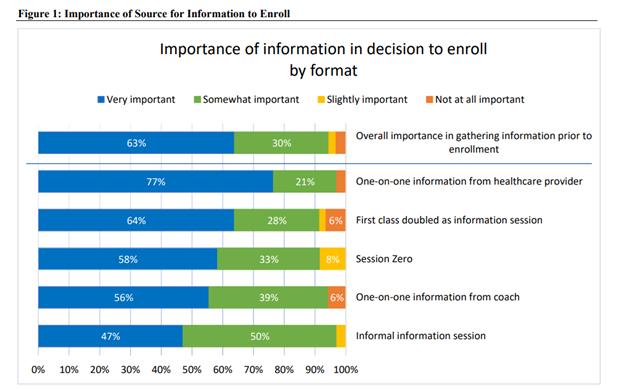National Diabetes Prevention Program Virginia Assessment
In 2021-2022, the Center for Survey Research (CSR) conducted a study to assess the National Diabetes Prevention Program Lifestyle Change Programs (DPP) across Virginia. The survey was performed on behalf of the Virginia Department of Health and in partnership with the Virginia Center for Diabetes Prevention and Education to measure the program’s rates of retention, referral, and recruitment in Virginia. Survey data was collected from healthcare providers from February 5 to March 15 of 2021 and yielded 167 usable survey submissions.
DPP participants were surveyed between December 17, 2021 and January 19, 2022, producing 835 usable survey responses. Based on the responses, most DPP participants had an overwhelmingly positive experience with the program. Of those who completed the program, 43% reported their blood sugar levels improved and they no longer have prediabetes. Additionally, former participants reported success in maintaining healthy eating habits, listening to their body, and improved A1C.

Retention
The retention phase collected data from previous and current participants of Virginia-based DPPs to determine possible barriers to participation and factors that may have contributed to their successful completion of the program. Top factors influencing whether or not participants completed the program were: whether the program was virtual or in-person (with 55% of virtual participants reaching completion compared to 75% of in-person participants) and the patient’s perceived severity of the health issue, with highly-concerned patients completing the program at a rate of 86% while only 57% of the less-concerned patients finished the program. Those who left the program before completion cited challenges such as not seeing fast enough results, high frequency of meetings, overwhelming time and money commitments, and transportation and scheduling concerns.
Referral
The referral portion of the study asked Virginia healthcare providers about their familiarity with the program to gather data on how to increase state-wide awareness of DPP. Among healthcare providers, only 22% of responding providers had heard of DPP before the survey. When asked about barriers to referring patients, the top issues all involved a lack of information, including general information about the program, its local availability, its out-of-pocket costs, and how to refer patients to the program. Given these findings, increasing awareness of National DPP among Virginians ought to be a top priority for VDH. In this effort, healthcare providers should be mobilized as a key channel for sharing information about National DPP to Virginians at risk for developing diabetes.

Recruitment
In the recruitment study phase, data was collected from Virginians at risk for type 2 diabetes about their awareness and impressions of the program and the best ways to share program information within their communities. Respondents emphasized the influence of gathering information from their healthcare providers and other sources on their decision to enroll, with 90% saying this information was very or somewhat important to their decision. Receiving one-on-one information from a healthcare provider was the most influential on whether or not patients chose to enroll.
For the full report and all related content, download the files below.


